.jpg)
ChilCast: Healthcare Tech Talks
ChilCast: Healthcare Tech Talks
Redefining Digital Health with Froedert Health's Dr. Bradley Crotty
Digital and app-based tools have long held the promise of improving care delivery for patients and providers alike. But in the world of healthcare, which is characteristically slow to adopt new technologies, how does a patient/consumer receive value or a favorable outcome via the use of technology? And how can these tools improve the experience of doctors everywhere, who are already being asked to participate in a myriad of tech solutions in addition to their daily practices?
We sat down with Dr. Bradley Crotty to dive into these issues. The Chief Digital Engagement Officer at Froedtert Health, Dr. Crotty is responsible for overseeing the digital transformation of the organization, as well as leading the digital engineering group and the product team within the health system.
When it comes to adoption of these solutions, winning over the hearts and minds of users is always a challenge. Dr. Crotty's experience working directly with clinics and publishing in peer-reviewed journals is helping to strike at the systems in place—often designed to maintain the status quo and minimize risk—and truly transform what it means to be a healthcare consumer in the digital age.
Dr. Crotty: [00:00:00] I'm really looking forward to the to the day where it is much more plug and play. Patients and customers can get a lot more value faster. And it's really about helping people live better, healthier lives and making health care in general much easier to access and navigate and to engage in.
John Moore, III: [00:00:22] Welcome back to the Chilmark Research podcast, ChilCast: Healthcare Tech Talks. Today we we'll be speaking with Dr. Bradley Crotty, who is the chief digital engagement officer at Froedtert Health. So, Dr. Crotty, can you tell me a little bit about your specific responsibilities of your role at Froedtert Health?
Dr. Crotty: [00:00:50] Sure. What I do is I oversee our digital engagement work, and so that's in a couple of different areas. One is in transformation. How do we move our existing business to be more digital? And we like to say not just do digital, but really be digital. And the other big aspect of work is that we actually have a digital engineering group within our health system and I lead that work and our product team, as we're as we're building our own capabilities really to integrate the right partners and the right experiences into the care experience for our patients.
John Moore, III: [00:01:29] Fantastic. So when you say not just do digital, but be digital, I mean, I get the concept there. But can you tell me how that has actually played out in terms of the impact that it has on the culture, just by reframing it in that very simple way?
Dr. Crotty: [00:01:41] Yeah, sure. A lot of people can talk about how we need to do digital. We need digital for scheduling. We need digital for for care. We're really trying to build digital not just as a as a sidecar to our work. It's not: we continue our business as usual and then we add these digital capabilities. But we're really trying to look at where digital is, the way that we deliver care. It actually is the culture we're building that this is very different for many health care systems, really trying to build in a product culture, particularly for our digital engagement experience, that drives the value. We're not we're talking about building so there's small incremental value release as opposed to a big project. And that's usually the way that healthcare systems work. And another thing and I'm happy to talk about on this later is we have a concept that my colleague Mike Andrews developed called Super Power Our People, which really looks at the conversation of automation in a very different way. It's not just, "oh, let's add in automation," but it's really: how do we leverage and make our people a lot more effective using technology and using tools? Let's think about technology at the very beginning, not just at the end. And how can we do more? Because that's going to be an issue facing all kinds of health care companies now is: how do we do more with fewer people? And so that's just an example where we're really trying to look at the technology, the culture and the people all together to make that health care experience.
John Moore, III: [00:03:13] Okay, fantastic. Thanks for that breakdown. So you are also involved with Inception Health, which is a fully owned subsidiary within Froedtert. Can you tell me a little bit about that responsibility as it compares to what you're doing with Froedtert?
Dr. Crotty: [00:03:27] Yeah, absolutely. So one of the ways where we're trying to be digital instead of just do digital is by creating a product mindset and infusing that into the organization. Inception Health started out as an LLC. Now about seven years ago, it's wholly owned by the health system, but we gave it a different name. We gave it different offices with different colors on the walls. And and what we tried to do there is signal a new mindset. We didn't keep the same corporate color scheme and logo. We're really trying to say we are going to think differently. And it was organized differently. It has a small board of health care system executives to help prioritize and drive the work. And Inception also signals to the marketplace that Froedtert, the medical college at Wisconsin, is a good partner to work with early companies to be a test laboratory for change and in seeing what can measurably improve the care experience and the care for patients.
Dr. Crotty: [00:04:32] Health care systems are very hard to have as customers. For any anybody who's had a start up, I'm sure you know you know this where it's hard to sell in. There's certain cycles that you need to be on. You have to talk to eight different committees and get sign off. And so what we try to do with Inception is really streamline those and keep it with a dedicated budget and separate legal resources so that we could move faster with our with our innovation work. More and more we've developed, as I've alluded to earlier, we've developed our own digital engineering and product team. And it's not that we're out to build everything, but it's that we have that capability to build an experience layer and to integrate in in a more tightly connected way with our with our partners that we that we work with. And so that's been a big part of our mission over the last two years.
John Moore, III: [00:05:29] So is the plan for Inception then to commercialize some of these products that you're developing to other health care systems and other health care organizations? Or is it really about just within the greater network for now and then potentially, if the time feels right, deploying it externally?
Dr. Crotty: [00:05:44] Yeah, that's right. The mission of Inception was was really always to transform Froedtert at the medical college at Wisconsin Health Network. It's really to to take the the business that we have now in health care, caring for our patients and moving that from episodic to longitudinal and from solely in bricks and mortar or bricks and mortar supported by a portal, to really a more engaging digital experience, an at home experience. And so we're very focused on our patients that we care for in our community. If it so happens that if we do find that there's a market for something, we can take it and externally commercialize it. But that's you know, that's sort of a secondary game. One other thing that we do at Inception is we also do manage our our venture arm on behalf of the health network too. So there is a little bit of this overlap and part of that network that we've been that we've been building within the health technology space.
John Moore, III: [00:06:50] So something else that we've talked about separately before this call was what you've done around the concept of a digital formulary for digital therapeutics. This is a huge space that is very new. It was actually something that Chilmark Research covered very early on in the development of just the concept of digital therapeutics. And it was actually how I was positioning my startup back when I was doing the mental health startup. So we're actually at a point now where there are enough well vetted, well regarded applications out there that have shown clinical impact, that it makes sense to start prescribing applications and digital services to patients to help them manage their illness. So can you tell me a little bit more about what that actually means practically on the provider side and the different implications and considerations that you need to take into account as you start to try to utilize all these new tools at your disposal.
Dr. Crotty: [00:07:40] Absolutely. What I'll preface this by saying is that we have great tools for changing biology. They're pharmaceuticals and they're getting increasingly sophisticated. We have great tools to change some aspect of physiology, and those are generally medical devices and stents or other biomedical engineered tools. But we don't have a great toolset for changing behavior and really getting into the home environment. But everyone has a smartphone. And yes, asterisk, not everyone has a smartphone, but most people have a smartphone or some access to the tools or some access to the Internet, even across all socioeconomic strata.
Dr. Crotty: [00:08:20] So what we're seeing is an opportunity to be in that space and to support people along both the wellness journey as well as a particular health journey. Now, practically speaking, if you open up an app store or the Internet, you're inundated by a lot of different options. And there's also a lot that a big range of what companies and digital therapeutics do, everything from something that's FDA gone through the FDA regulation pathway and then some things that really just provide education or information or self tracking. When Karan Deep Singh was a colleague of mine who's now at University of Michigan, he had to publish a paper in Health Affairs, I think, in 2016 and looked at the app stores and said there's 160,000 different health applications, along from tracking to behavior change.
Dr. Crotty: [00:09:17] And that's just really unwieldy for anybody to to work with. Some of them also will have security and privacy implications. Some of them have good research for effectiveness, some do not. So what we did at Froedtert and the Medical College of Wisconsin through our Inception Health vehicle is created a formulary, and it's really a product line around managing that formulary around digital therapeutics because we believe that this is a space that we need to to be and to support our our patients and our our clinicians. The very first digital tool that we brought on was a digital mental health tool called Silver Cloud. And we chose that because at the time we needed a mental health tool because we were doing, like most health systems, routine screening for depression, but needed an avenue to help physicians and an advanced practice providers help patients who screen positive for depression, particularly with longer mental health weights and generally lower mental health behavioral health availability. So we put in a mental health tool. We can certainly talk about what that implementation looked like now. But what you'll kind of see in our data is that, you know, we have a 22 to 25% drop in the Depression and anxiety scores among people who engage in it.
Dr. Crotty: [00:10:46] That doesn't use any additional staff resources, really. We have a supporter who reviews it every other week and encourages people through it, but it's a pretty effective use of time. And when it comes to choosing what goes into it and some of the aspects I talked about earlier is that, you know, is there research behind it? Is it well validated? Is it well vetted? Is it built on a good, solid understanding and model? What's the user experience? Are our patients going to find that it's it's easy to use or not easy to use? What are the economics of it? We look at these from a value based care perspective. And so at the moment, when we prescribe a digital therapeutic through our formulary, it's available to the patient at no cost as part of our our value based care journey. So are we going to get good outcomes for the time and money invested in that in that digital therapy therapeutic? Is it accessible to people? Does it protect and store data in an effective way? And so those are the general criteria that we use for evaluating our our tools.
John Moore, III: [00:12:02] Are there any criteria that may not come to mind easily for people or any little things that you've learned throughout the process of evaluating these different tools that you weren't aware of at the beginning?
Dr. Crotty: [00:12:12] Well, we do like to be partners and to shift and develop. So part of it is a willingness to want to work with health system partners, particularly those who do have digital engineering groups as well, where we can really make it more of an integrated experience into our other our other service offerings. Generally, people have a strip mall of apps that they have. And part of the power of what we're creating is you can, through our technology stack, be prescribed a digital therapeutic through the electronic health record. We can then use our our our partner Xealth, who disclosure, we also are an investment in and but we can use that to automatically enroll the patient and we can use our patient identity platform to do single sign on so that the person has one less login that they need to memorize or use. So that's kind of how we can see these put together and we'll want to see generally a willingness or an ability to plug into our ecosystem as another criterion.
John Moore, III: [00:13:21] That all makes sense. Pretty standard these days that you've got to be able to plug and play nicely with all the other systems that are already implemented. Definitely one of the most confounding factors of trying to do deployments in this industry though.
John Moore, III: [00:13:34] So when you were talking about the digital formulary, you mentioned that you were able to see approximately a 25% decrease in severity of depression among the patients that were utilizing the silver cloud tool. So can you tell me how you're actually able to quantify that and track that or why? Because obviously-- and also the use case. So you could tie the use to that reduction because obviously a lot of times it's mostly a black box that people get when they ask a patient to download an app and they don't know if they're using it. They don't know if the outcome that they're seeing is actually because the patient has been adherent to that app's recommendations and services or not. So can you tell me a little bit more about how you actually are able to track what impact these have, the uses that the patients are getting out of it?
Dr. Crotty: [00:14:15] Our ROI is something that always comes up. And it's an important question. I'll just tell you a little bit of our of our journey in the in the beginning, we didn't set a particular ROI goal or hold ourselves accountable to that for engaging in a bringing a digital partner on into our ecosystem. And part of what we wanted to do is learn as a as a, as a provider organization how to use these tools and how to work with patients on them. You know, as time goes on, of course, it is a show me that we're adding value and that can be good because there's cost to it and there's the simple cost of doing the contract with the digital. But there's also the the opportunity cost for other tools or for the time and energy that goes into doing the implementation and and all of the awareness campaigns, etc.. So all of those do do add up. And so it comes down to what outcomes are you able to see.
Dr. Crotty: [00:15:26] So there are hard outcomes like impact on utilization or impact on hospitalization readmission and there are softer outcomes, such as brand loyalty and affinity and engagement with our digital system, which we do quantify on those measures. But I will admit that they're more assumption laden than than some of the some of the others. When it comes to doing our evaluation, we try to use some fairly rigorous methodology. We will use difference in difference methodology. We will use stepped wedge implementation design to evaluate a different intervention and its impact. And we'll use propensity score matching. What we generally don't do is a randomized controlled trial. We'll want people to have had data or really good data to support support this. But what we will do is sort of a real world effectiveness evaluation to see is what we are doing, is that hitting the mark and generally like the silver cloud example, we do try to share those in the peer reviewed literature to move the whole field of digital health a little bit farther forward.
John Moore, III: [00:16:48] Okay, great. So why would you develop your own digital formulary with a company like yourself instead of just utilizing maybe your as marketplace? If you already have a marketplace within your HR that has some of these patient engagement tools in that space.
Dr. Crotty: [00:17:05] The HR marketplace is definitely evolving, and I think it's also had a couple of pivots and evolutions throughout the last couple of years. But at the tenant, when it comes to developing a formulary, we wanted more of a plug and play solution. And even though something may be in an EHR app store, it still requires a fair amount of integration work to be added in, to have the interfaces, make sure that everything is live and running and working and and maintained. And so we felt that having a for for us having a partner to help with that helps us accelerate our value. And we've done some ROI calculations on that as well. If we sort of put a cost on IT time to do integrations. There's also, I think some other things that we look at as part of being a broader part of a digital health community, where if a tool is already integrated or sort of done the work and created the workflows, we can start to take those and create them. And so it becomes more of a network effect and returns value across across other health systems as well.
John Moore, III: [00:18:18] That's actually a great segue into one of the questions I was planning on asking later, which is: What are you most excited about with the prospect of network effects coming to health care?
Dr. Crotty: [00:18:27] Yeah, so, you know, a network effect is going to enable us to do more, the more that people are involved and engaged. And so once we have a digital health ecosystem, which I will admit is very, very, very fledgling, despite all of the billions of dollars that have been pouring into the digital health ecosystem is still very, very, very immature. And so really what we're--what I sort of get very excited about is that eventually we will have an ecosystem that is built on sort of a patient engagement platform layer, engaged but has multiple different partners that can add in there. People can choose and organizations can choose which applications they want to use. Patients can choose which applications they use. We can patients can choose to share which data elements they want to share back to different providers in health care systems or with partners. And that the value is really accelerated right now, despite all this work, everything is still in integration and integration and integration.
Dr. Crotty: [00:19:37] And despite a lot of good work and money going into this, it's still not easy to bring something in to the health care provider ecosystem via the health care and interoperability resources standard is a nice concept, but if you're talking about health care operations and doing things day in and day out, it's not sufficient for doing what we need it to do. And I think the EHR system still have a long ways to go to be really API friendly to develop that ecosystem. So, you know, it's still early, early days. You have platforms like Xealth's and you have other platforms that sort of serve as an API, gateway, middleware or organizations like ours, putting those together themselves. But I'm really looking forward to that to the day where it is much more plug and play. Patients and customers can get a lot more value faster. And it's really about helping people live better, healthier lives and making health care in general much easier to access and navigate and and to engage in.
John Moore, III: [00:20:47] And that's another great segue point. So one of my questions I want to get to somehow was, how are you guys dealing with the access issues and the quality issues around kind of the social demographic equity topics that are very paramount in everyone's minds right now, especially with some of the disparity issues we've seen highlighted by the pandemic.
Dr. Crotty: [00:21:07] Yeah, no, that's a very important point. And while I prefaced my remarks by saying that the gaps, particularly for Internet access, are decreasing, they are not zero. And those gaps are also a little bit different. There's there's gaps of having Internet access. There's gaps of having access to a personal device or smartphone. There's also gaps of trust in terms of, do I want to share this data or do I want to engage with you digitally? There's there's differences in access and ability and form factor and other things, particularly for patients across a spectrum of different abilities. And so we think deeply about this from the very beginning. And I think we all we all have to--we also have health equity, workgroups, etc. and I'll give a couple of examples of of how we have mitigated some of these.
Dr. Crotty: [00:22:03] So the first thing we do is we study and track and some of the the publications that we have put out that we've written from COVID in the publication have actually been in the disparities area. We've looked at where telehealth visits have not worked well and where the disparities are, and we publish that in JAMA Network Open. And so so one is we you have to sort of proactively be looking at that and studying those. And then when you do that, we can also look at ways to mitigate it. When we look at our what we did for COVID vaccination in February of 2020, in December of 2020, when we look at the COVID vaccination rollout, it was a very scarce resource. As we got shipments of vaccines to us, we'd find out each week how much we're going to get from the state of Wisconsin.
Dr. Crotty: [00:22:53] And then we had to allocate those to our highest risk patients. So we used our digital tools as an outreach, but we also use text messaging to reach our patients within the inner city. Milwaukee zip codes that we knew are going to be less advantaged. And we also gave them a little bit of a head start so that we could get appointments scheduled and that we were allocating vaccine in a way that wasn't just having the digitally advantaged go first. So one is track, two is is really think about mitigation. We also in our digital therapeutics formulary, we look at form factors and accessibility.
Dr. Crotty: [00:23:35] So for example, we've used a digital health tool for diabetes that even in my clinic, in my clinic, I've seen some of my patients, particularly if they're a little bit less tech inclined, have a harder time kind of sinking a meter to it. It's really helpful, especially for our pharmacists that are helping titrate medicines when they have all this data and it works. And for some, for some, the form factor can be limiting. So we've also engaged in another digital tool that primarily uses text messaging and enables them to connect with our pharmacists and our care coordinators. So we also look at what gaps we have there so that we can we can take those on and look at arranges. And that's also why we want to have a formulary, maybe just as one medication may be better than another for a different particular patient. We want to have a couple of different options that we have high belief and clinical efficacy and value for patients and clinicians to choose from.
John Moore, III: [00:24:35] So that's great. So thinking about that formulary and what it's enabled you to do, can you tell me about the impact that that has actually had when you're trying to integrate these new external applications into existing workflows?
Dr. Crotty: [00:24:49] Yeah, one of the best stories that I can share about this is with our digital diabetes program, and this is another example where we've used different and different methodologies. So quasi experimental design to really understand the the impact of a pharmacist led program and then incrementally the impact of a digital access and digital diabetes tool. So what we have done there is for people with a hemoglobin one C that is above target. So we'll use an example of an AMC above 9%, which really by any quality standard is out of range. We will practice. Of the outreach to them to engage in one of our diabetes telehealth programs. It's really a telephone could be video, but it's mostly telephone engagement with our clinical pharmacist to work on diabetes, medication titration and other lifestyle changes. So that's been kind of hardwired into our digital into our population health efforts across our primary care base.
Dr. Crotty: [00:25:56] And then the digital piece as well can be we have some decision support in the electronic health record that even if someone doesn't quite meet that automatic threshold referral, there is a decision support, sort of a passive decision support alert that recommends that they could engage in our digital diabetes program and that that could be clicked on. And to kick off that engagement, we've seen generally very good outcomes and this is undergoing the peer review process as well for our diabetes program where we can have an ANC input or ANC decrease by 2 and two and a half percent.
Dr. Crotty: [00:26:33] And we see with our digitally engaged that being on the higher end and the sustaining being better, better too. So we definitely see a good effect there. And then just to kind of connect this to what do we do with this information, how do we expand it as a as a health system? We worked with some of our payers within our region to to say, you know, we have pretty good outcomes from our telehealth and digitally enabled diabetes program instead of an insurance company going and saying, well, here it's this other product for your diabetes, you know, let's partner together so that the diabetes program runs through us, it runs through their care team or or their primary care home, their medical home, rather than through another team that's orchestrated through the through the payer. And that partnership has enabled us financially to not just take people with a hemoglobin, A1C of 9%, but also hemoglobin A1C of 8%. So it's sort of not the you know, the A1C is on fire, but the A1C is is smoldering. So we can have a user resources for an earlier intervention. That's been a very helpful part in that partnership with our with our payers is enabled us to expand the program which has been great.
John Moore, III: [00:27:59] It sounds great. I've always been a big believer that the potential of smartphones will really be delivered when they're in everyone's hands and we can start tracking all of this kind of extra data, the contextual data that we want so that we can actually see the impact that either health interventions are having or what the patient's doing outside of the care setting that is affecting their outcomes.
Dr. Crotty: [00:28:19] Yeah, totally. Just to just to build on that: right there with you with you as as well. And I think people are looking for opportunities to unlock all of the other data that that we that we have. If a marketer knows more about your behaviors than your trusted relationship, than your doctor does, who has the trusted relationship with you, like what's wrong with that? So that picture, the key is how do we unlock it? How do we do it in a way that is is secure and maintains the level of privacy that the that the patient would like to to have. And we've also done some research with contextual data. We think it's really important when people do provide some additional contextual data, whether it's social determinants or goals or other factors. We have done an actually a randomized clinical trial that shows that there is improvement in communication with your doctor in that. And then, you know, we're very bullish on on on seeing what other benefits we can have. It's really about how we separate out the wheat from the chaff and the signal from the noise in all those data. But of course, I'm biased working for a health system, but we do think that we have a capability that others in the technology industry may not have and that we do have a trusted relationship with patients. And then that comes to where it's very important when we choose partners, that our partners have very clear privacy policies and practices, and that everything we do really respects the trust that our patients put in us.
John Moore, III: [00:29:54] So thinking about the privacy concerns: AI trust and bias is something that we've been really leaning into as an organization here. And part of that we're seeing a lot of these issues come up around just people trusting organizations to do the right thing with their data. There is a big to do about the Google Ascension deal that happened where they were giving data to Google even though it was all going to be under a business associate kind of context or the FI was going to be stripped out and everything. But there was still a lot of outcry about the fact that Google was going to start having access to all these records. So how are you guys trying to address those concerns when patients bring them up and. How much is this actually part of the conversation that you're having with patients when you're trying to enroll them?
Dr. Crotty: [00:30:34] We're exploring a couple of different models, and we've been thinking over the number of years about how we have different opt in policies or some more advanced types of research and develop like a construct around consent. The way that we do our operational work and research is we do everything in it's not out to a partner. It's really all within our ecosystem. Now that may be. And we're increasingly like other health care systems organizations moving to cloud based tools. So that's what really everybody is doing.
Dr. Crotty: [00:31:10] But we're architecting in a way that the data belongs to us. It's not accessible by cloud partners, for example. And the trust that patients put in us when they come to us as a health care provider is sacrosanct. And we respect that. So that's the way that we've architected our data. And then within our digital engagement platform, we're looking at ways where people can opt in to providing more data. And what that does is it parlays into what's in it for me, what will I get from being able to to have that data. And so some of them may be more actionable health insights, some of them can be health insights that our health care team can know about you. But we try to be we'll try to be fairly transparent about that. Social determinants of health information is a good example where at least in our electronic health record, which is which is which is epic, has smartly built in these important data points that are really important for clinical practice.
Dr. Crotty: [00:32:13] And just like I'm saying, we're using those data points to really improve on our health equity aspect. We also have a--we've helped catalyze a really important community partnership in our organization with a company called NowPow so that we can actually take needs that people have at an individual level and and get them connected to community based organizations, whether it's at least providing them a list of relevant community based organizations or providing referrals mediated through our social workers. So, you know, it's really about what do we do with those data and and have value. And sometimes the conversation that patients have right now is like, why are you asking me this? Like, you're my doctor. Why do you ask me about food security or housing security or whether I go to church or etc.? And we have to do a good job about explaining to people what is in it for them and and how do we how are we going to use these data to help them? And so that's a journey that we're on in trying to develop that at the time. We ask for the data and the EHR.
John Moore, III: [00:33:16] That makes sense. I think with everything we're seeing with the extra criticisms facing some of the big tech companies right now, like the Facebooks and Twitters around the user access and the way that they use their user data, we've all kind of learned that if the system is free that you're using, you are the product. So if people are coming into the health care context and being given a free app, that's kind of probably going to be their first instinct these days just because they've been betrayed or they've just lost trust in a lot of these big tech players due to the oversteps by companies like Facebook. So I'm glad that you're trying to really show them that the benefit is their health and that's where you guys make your money as the product because they are the product because you're giving them care. It's not that their data necessarily is the product. They themselves and their well being is the product.
Dr. Crotty: [00:33:59] Now, that is exactly right. And I think that's where most people in the digital health space who have worked in it will know that the ultimate area where we're trying to get to is a business model is is fee for value. You know, there have been a lot of remote monitoring codes and CPT codes that have been developed for using remote patient monitoring, for example, or for prescribing different digital therapeutics. And we have been hesitant to use those. And from talking with other folks, it seems like only a third of health organizations are really using those codes as if we're really skating to a puck of we're working with payers, employers, the government payers to say we're going to take care of people and do whatever we can to keep them healthy, keep them out of the hospital, keep them out of emergency rooms. We want to use all the tools that we have at our disposal. And digital is going to be a really important tool, but we're not doing it as a way to like incrementally, incrementally make make money.
John Moore, III: [00:34:57] So one thing that we've posited here at Chilmark Research for a number of years is that EHRs and a lot of the original tech in the health care space, it was all about being a system of record. It was just documenting what was going on, documenting the encounter. And we've always advocated for shifting away from just these kind of siloed databases that are static and not very useful to shifting everything into more of a system of system of engagement, which is what you're talking about. And I actually made this just randomly having a conversation with my neighbor last night. I had this epiphany that one of the biggest issues that I have with health care I.T. and I think that's been holding the industry back, is that it was founded from a very capitalist mindset. The first item that was really being deployed across these systems was for monetary reasons. It was all about the billing intent. And so I think that that is there's the very history of how health IT evolved from being based on billing, and then it was always based on billing and basically until the HITECH act got passed and we actually had to have meaningful use of these systems. So I think that what you guys are doing with this whole concept of "be digital" is a really good way to rethink that history and how we got to where we are today. So I just wanted to put that out there.
Dr. Crotty: [00:36:05] I could share just a little a little sidetrack around history. You know, where I and my my colleague, the chief technology officer, came from is we came from Beth Israel Deaconess in Boston. And by Deaconess, I referenced that because it's one of the last hospitals and health systems to build its own electronic health record. And our--
John Moore, III: [00:36:28] John Halamka, right?
Dr. Crotty: [00:36:28] Right. So I worked for John. John was a fellow for Charlie Saffron and and Charlie worked for Warner Slack and Howard Blight. So you can kind of see this family tree of of pioneers in in the health care space. So when Warner and Howard built the first clinical computing system and yes, there was a part of hospital administration system, but where it really got interesting is when they built it for clinicians and they would have basically a phone, you know, it's really a phone call between the the developer and the clinician saying "it would be really cool if we did this or that." And then they would go and say, "okay, I'm going to build this." It was very tightly coupled with that clinical care piece. Charlie Safran built out what we call the Omer online medical record. And then John certainly made it a modern web, web front end of it. So we called it Web OMR. But, you know, he would give like, you know, when it was only basically in a in a terminal setting, there's only a couple of characters to type something. And then the doctors would say, Well, this is really helpful because I can find it the next time. So I'm going to type this in.
Dr. Crotty: [00:37:40] Can you not only give me so many characters and so it actually--working with clinicians, I mean it really echoes what we consider agile methodology now. So somewhere in between, you know, when they were building this in the seventies and eighties and where we have now, we've sort of put in waterfall corporate health I.T. But it's really this ethos of of agile and and we're, of course, trying to get back to that where we follow some of those agile tenets. We, you know, if change takes us in one direction, let's embrace it, because it's all about delivering value back back to our our our users. So that's sort of an important part of where we think about delivering value. The EHR is probably going to be a transactional system and record, but you know, it's hard to believe that the EHR is going to remain the center of of the universe. It's an important piece and it has a very important role. And more and more it is a software suite that does a lot more. But really, you go back to our network effect conversation. It's really once we have that that ecosystem and that matures where we're really going to be hitting our stride.
John Moore, III: [00:38:54] Yeah. I love seeing my whenever I get a new update from the friend because somebody's actually gotten to the point of publishing from the data in Cosmos. I think that that's fascinating. It's starting to happen. We actually see it in real time happening,
John Moore, III: [00:39:07] So we're getting close to the end of the call. So I just want to try to fit in two more questions. One's a little bit of a big one, so if you need to be short with it, that's fine. But I wanted to try to tease out what are some of the biggest change management hurdles that you've encountered across the different stakeholders that you had to work with? Because you've mentioned that you work with the providers in your system, you work with the patients, and you also work with payers and employers. So can you just rattle off some of the substantial hurdles and any learnings that you would be willing to share with the rest of the community?
Dr. Crotty: [00:39:36] Well, the hurdles are-- the hurdles are nonstop. It's sort of like a I guess it's a it's a track and field track. It just has hurdles that go and you go around again. You know, health care, health care is conservative, particularly provider organizations, but also also payers. We're fairly risk averse. We have thin margins and we have governance structures that are made to not really embrace a lot of a lot of risks are really built to minimize it and to promote the status, the status quo. That's sort of the frank assessment. So when you're trying to do something different in health care, it can be a challenge where we've had some of that success is actually creating our separate LLC structure to help become a good conduit. So we're not vetting every idea or every solution through every single you know, aspect to the organization. And we can kind of short track those. So that's been really helpful. Now, when it comes to getting adoption, we still have to engage in the hearts and minds of users, and that's where common things bring people along early. We follow some change management processes. Rebuilding our digital video visit capability was one where we've engaged change management and the process all the way through. But in the end, it's a lot of needing to overcommunicate why and how. And then we have to be very, very careful not to just add things and figure out what we can take away as well.
Dr. Crotty: [00:41:10] And this kind of comes down to that: super power our people. So, you know, what's in it for me? What's in it for our staff? Our staff members? Our staff members are also consumers. They have a choice of where they can work in every health care system is in this boat now. So how can we make sure that we're bringing joy to their work and meaning to their work and not asking them to do one more one more thing? And so it's really important that we connect dots for for people. And a lot of that is really rolling up sleeves and going to clinics and talking with people and then showing them why do we publish in peer reviewed journals is to do so to we're in an academic health system and data helps part of our conversation when we have it.
Dr. Crotty: [00:41:57] And so that's where we are. We've also we've also made a couple of: we've used our internal social media, we've used memes, we've tried to communicate things in a different way to track the tension because there's there's so much, but they're just thrown at people. But at the end of the day, the health care marketplace is changing dramatically. And those systems that we have to maintain a status quo and minimize risk are are not going to help us evolve. And so it's just finding creative ways to get beyond those makes sense.
John Moore, III: [00:42:35] Final question, what do you see as the most substantive, underdressed issue facing the health care industry today? And bonus points, if it's something that we don't already see in a lot of headlines and we've already heard spoken about a bunch of times at hims. Yeah.
Dr. Crotty: [00:42:50] So I was trying to, I was thinking about what this may be. You know, there's a lot that is under addressed but not under talked about. So I'll sort of try to answer the under talked about and I think it's really around the the building, the ecosystem for health care operations because I think people talk about interoperability and FHIR and that's from a how to get data from one place to another. Anybody who works in building health care technology knows the limitations of it. And I think we need to have deeper conversations in how we really do that work and what it looks like. And it's not going to be I that's that saves that work. It's not going to be FHIR that saves us from that work. But we do need to really be talking about what are those and and there's an xkcd cartoon about this. You have 14 standards. We need a standard of standards, then you have 15 standards. So I'm very well aware of that.
John Moore, III: [00:43:52] You shared that one before from Chilmark.
Dr. Crotty: [00:43:54] Yeah! But that's type of that's kind of the discussion we need to have is like what is that ecosystem that really enables the digital transformation of health care and so, more to come on that I hope.
John Moore, III: [00:44:07] Yeah, definitely. There's a lot of experiments, a lot of trials going on, a lot of different pilots in the industry. So we're living in exciting times. Hopefully some of these stick and hopefully we can as an industry limit the amount of bad PR that comes from any missteps along the way that may turn people off.
Dr. Crotty: [00:44:25] It's a lot of change. So there is going to be learning. But you know, our North Star is to make our patients healthier and happier people. It's really all about them. So we will continue.
John Moore, III: [00:44:38] All right. Well, fantastic. Thank you so much for taking the time to speak with me today. Dr. Crotty, if there's anything else that we want to talk about in the future, I will be in touch. But this has been great. This has been really wonderful.
Dr. Crotty: [00:44:50] Yeah, thanks for having me, John.
Podcasts we love
Check out these other fine podcasts recommended by us, not an algorithm.
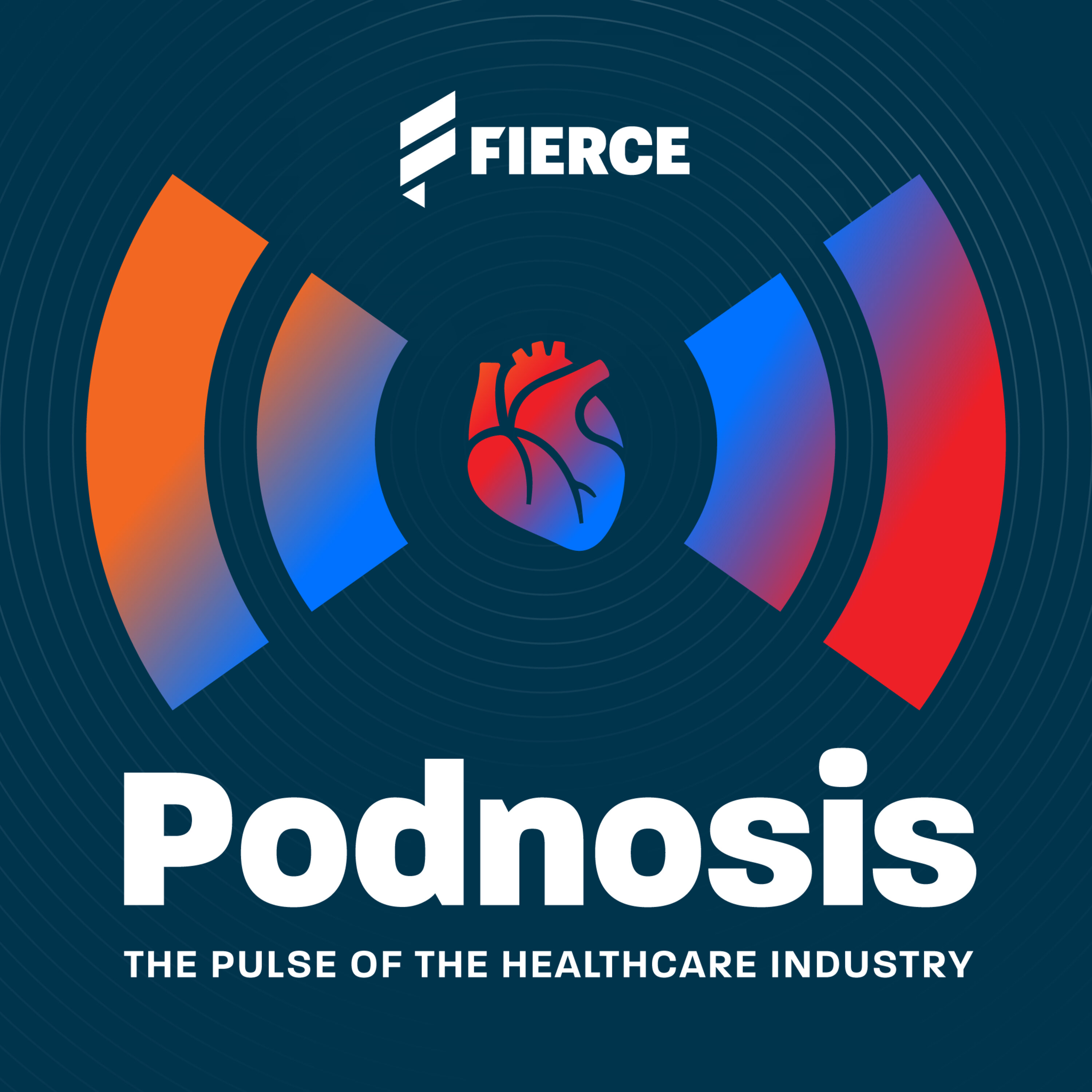
Podnosis
Fierce Healthcare
Akimbo: A Podcast from Seth Godin
Seth Godin
Straight Outta Health IT
Straight Outta Health IT
Beyond Clinical Walls
Dr. Bayo - Dr. Bayo Curry-Winchell, MD, MS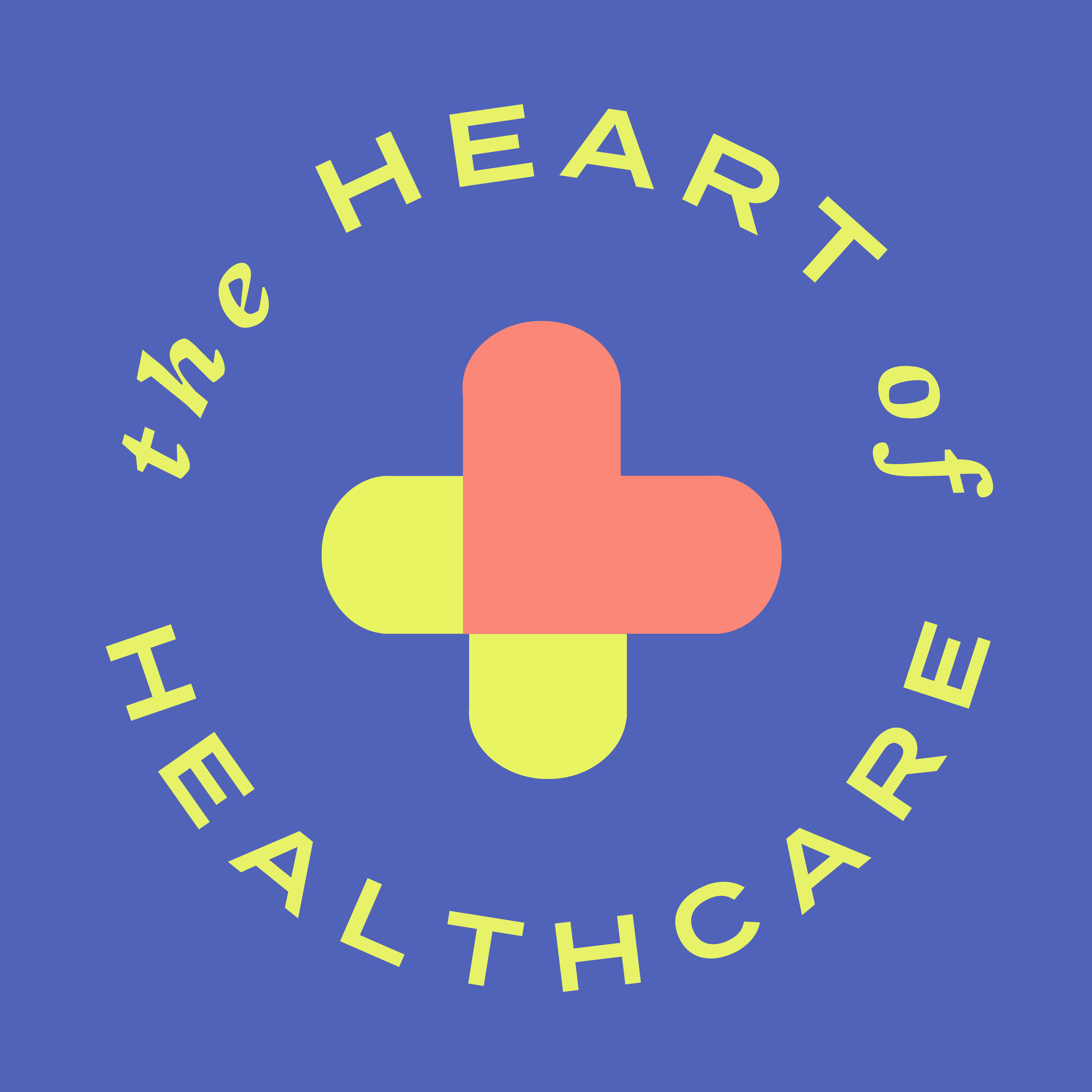
The Heart of Healthcare | A Digital Health Podcast
Massively Better Healthcare
The Knowledge Project
Shane ParrishRelentless Health Value
Stacey Richter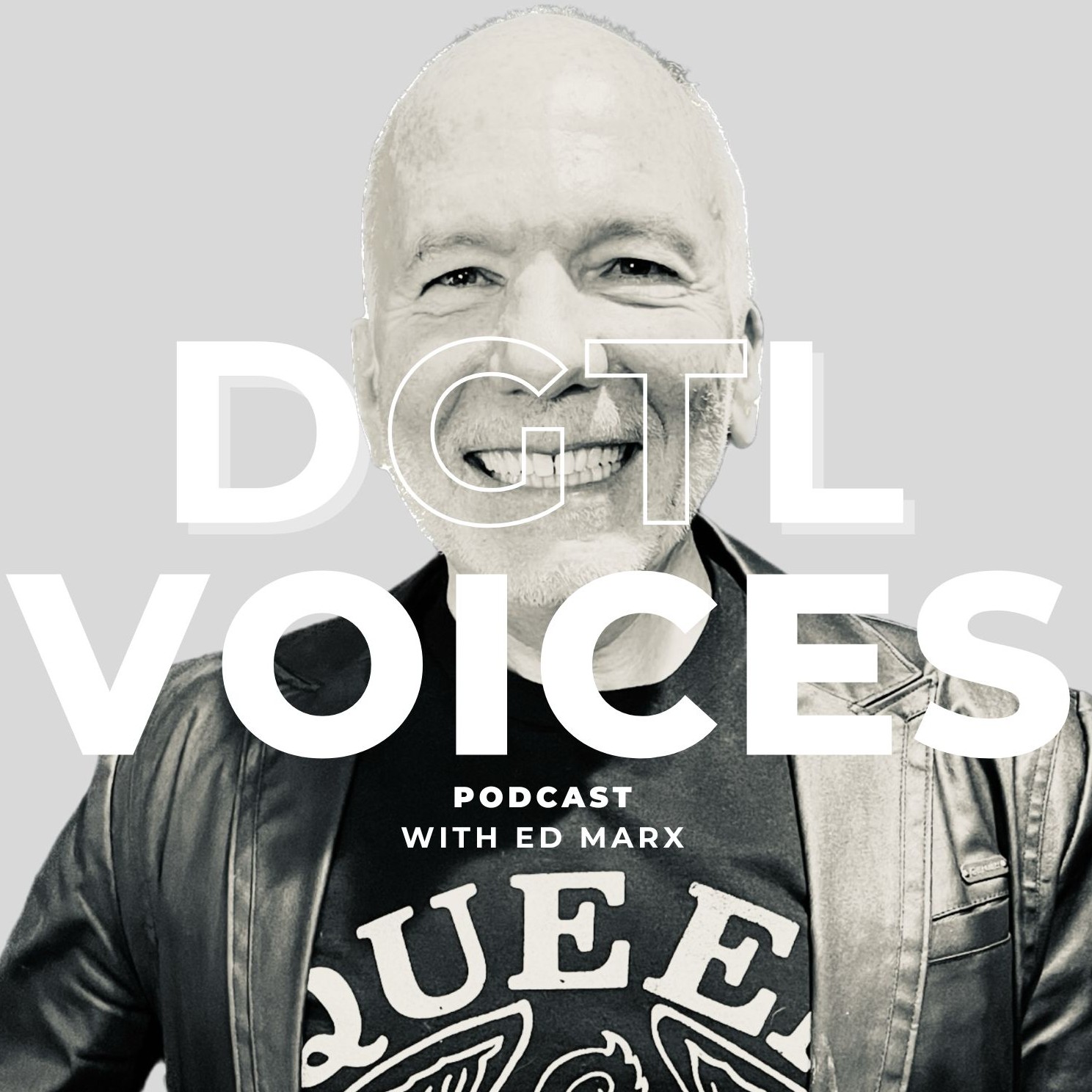
DGTL Voices with Ed Marx
dgtlvoices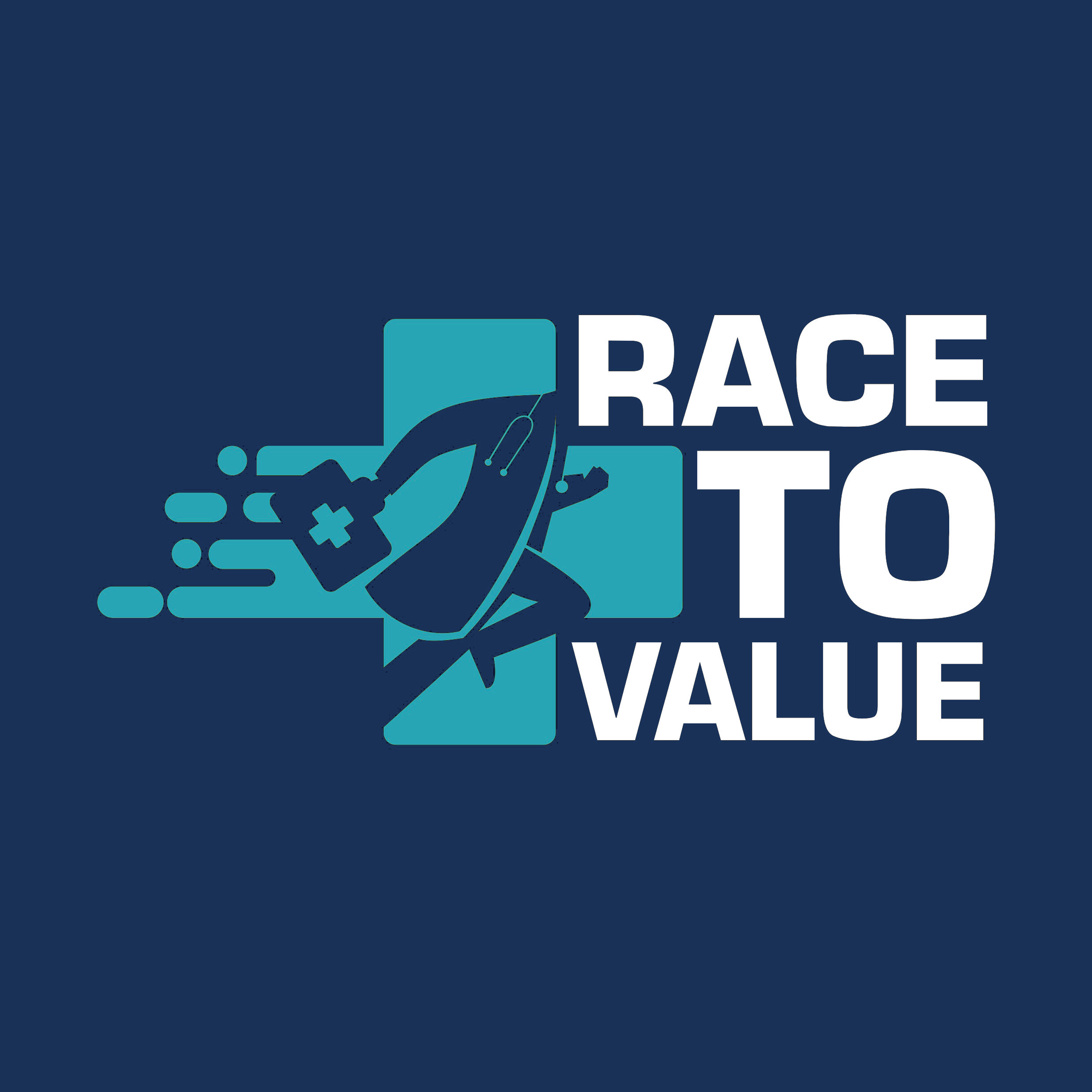
The Race to Value Podcast
Institute for Advancing Health Value
HIT Like a Girl Pod: Empowering Women in Health IT
Like a Girl Media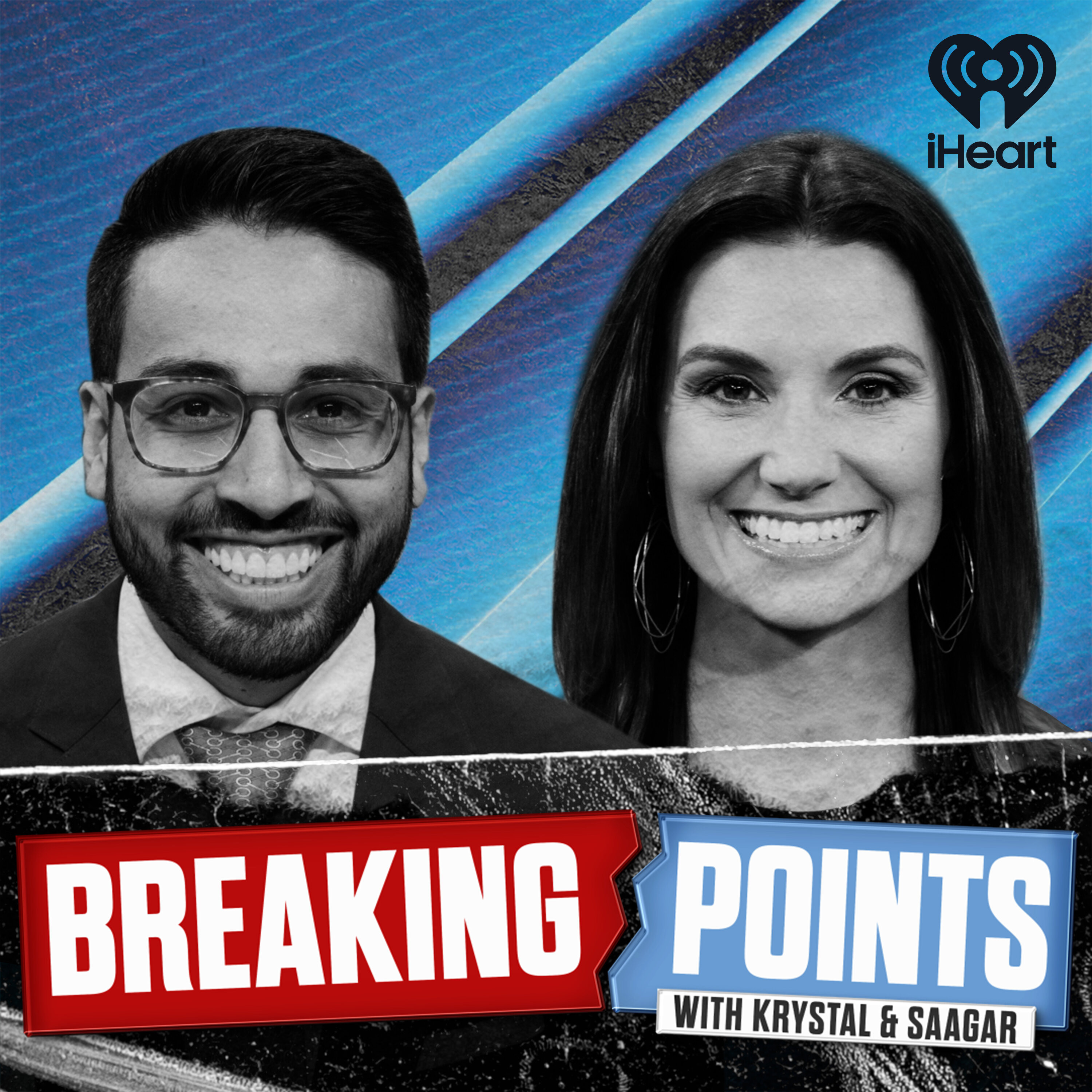
Breaking Points with Krystal and Saagar
iHeartPodcasts
NEJM AI Grand Rounds
NEJM Group
In AI We Trust?
Miriam Vogel
InteropNow! Podcast
HLTH and CHIME
Leveraging Thought Leadership
Peter Winick and Bill Sherman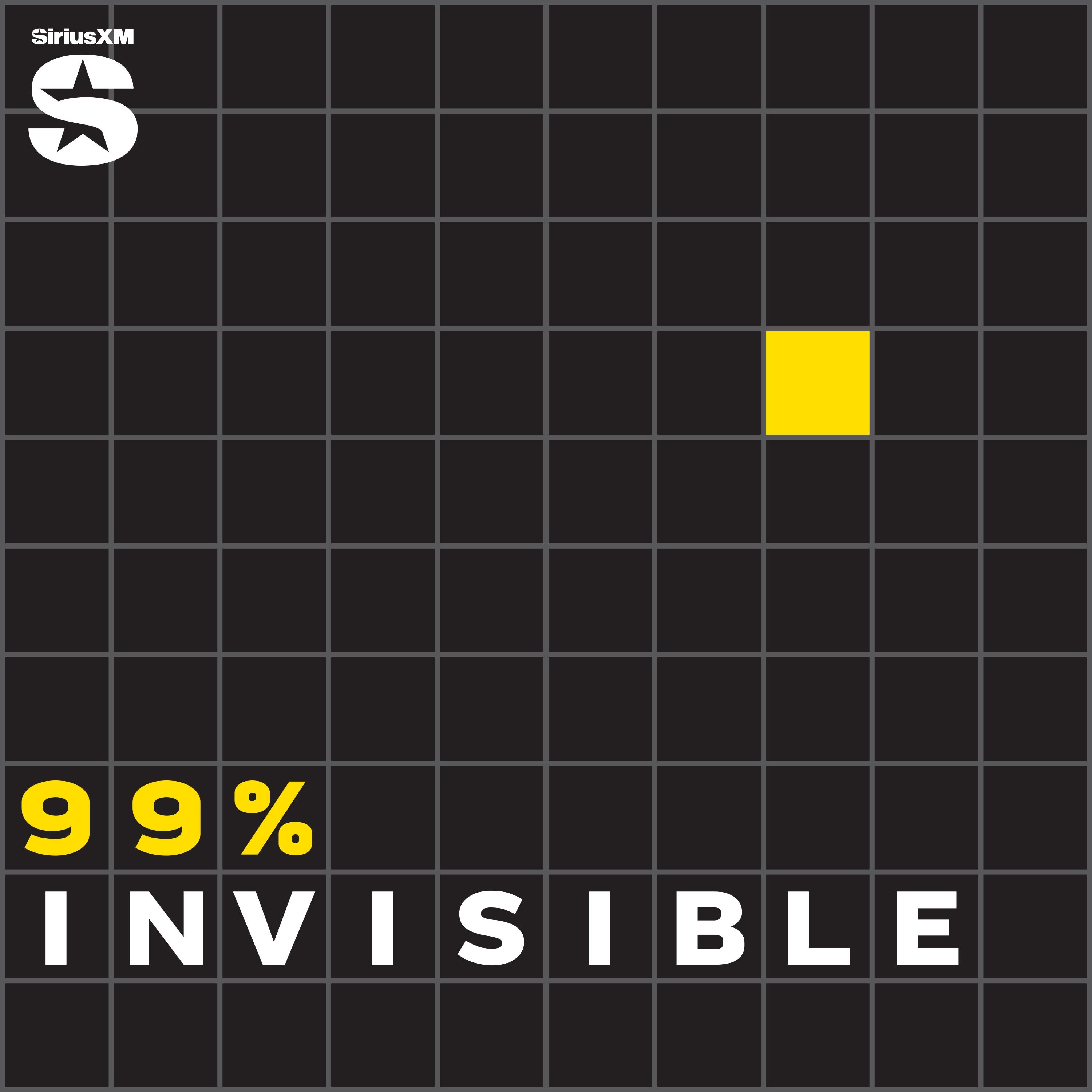
99% Invisible
Roman Mars
How I Built This with Guy Raz
Guy Raz | Wondery
Equity
TechCrunch, Rebecca Bellan, Kirsten Korosec, Anthony Ha, Max Zeff, Theresa Loconsolo

